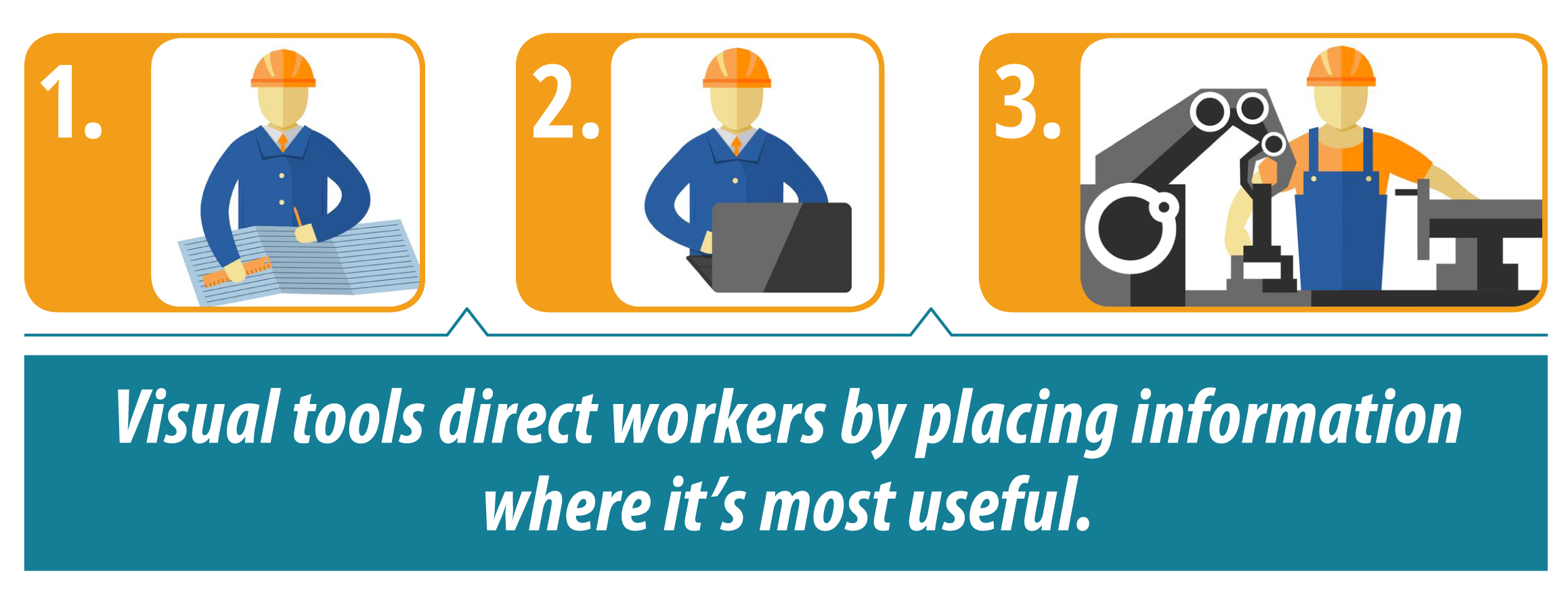Those who have gazed upon an infographic have experienced the core of a methodology that is captivating business leaders. ‘Visuality’ isn’t new, but its innovative application to workplace environments is improving efficiency, productivity and safety. Managers who have incorporated its principles into their business call it the language of leadership.
A visual workplace embeds visual answers to critical questions as close as possible to the place they’re needed in any work environment. One example is posting a safety slogan where it’s relevant to the employee — say a reminder about safe forklift operation in the warehouse where this equipment is used or parked when idle.
In a workplace that serves the public, such as a government office or retail store, visual aids such as signs or labels with words and images can eliminate the need for workers to spend valuable time answering the same questions over and over.
These visual tools aim to speak for themselves, directing behavior without the need for conversation. They aim to overcome the information deficits that prevent employees from being able to do their jobs effectively.
Enhanced Productivity
“Visuality is a language,” according to Gwendolyn Galsworth, Ph.D., author and president-founder of Visual Thinking Inc. and the Visual-Lean Institute. “Visuals can be easily understood at a glance, eliminating the wasted downtime that had previously been spent searching, asking or waiting for information. This model can greatly improve… productivity, cost, quality, on-time delivery, inventory and equipment reliability,” Galsworth says on her website.
Galsworth comes from the world of lean manufacturing, which strives to improve workplace efficiency and productivity by eliminating time-wasting practices and processes. She sees her system as a complement to the lean model: One encourages employees to institute and maintain order in their work environments and the other stresses placing information where it’s useful.
“Visuality … builds operational information into the physical work environment, enabling people and machines to work with greater precision because they are each increasingly self-regulating,” her website explains. “Lean … defines and directs the flow of work that visual spells out, dramatically reducing lead time and flow distance.”
Let’s Get Visual
Some concepts are easier to explain with a physical demonstration, and that’s just what the New Mexico Manufacturing Extension Partnership plans to do in a two-part seminar on the “visual workplace” and a follow-up site assessment April 26-27 in Albuquerque.
Galsworth will introduce participants to the idea in a seminar at Central New Mexico Community College’s Workforce Training Center and the next day lead them on a field trip to Desert Paper and Envelope — an Albuquerque paper and envelope maker — to offer tangible examples of how visual thinking can improve productivity in any setting, whether it’s an office, factory, hospital, retail store or library.
It’s appropriate that New Mexico MEP is sponsoring the event. MEP provides training and expertise in efficient production and administrative practices that help manufacturers create and retain jobs by becoming more competitive.
The two-day event, called “Visual Workplace, Visual Thinking,” is designed for company leaders, managers and supervisors of manufacturing and non-manufacturing companies. A one-day workshop option is available, but only those who attend the first day are eligible to attend the on-site visit to Desert Paper.
For information, call Ron Burke at 505-314-9121 or 505-681-8871; to register, complete an online registration form at http://newmexicomep.org/events/, or call Claudia at 505-314-9131. More information about New Mexico MEP is available at www.newmexicomep.org.
Download 446_Visuality Is the New Tool for Leadership PDF

